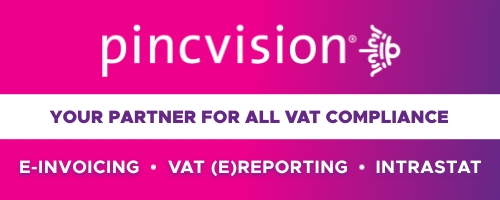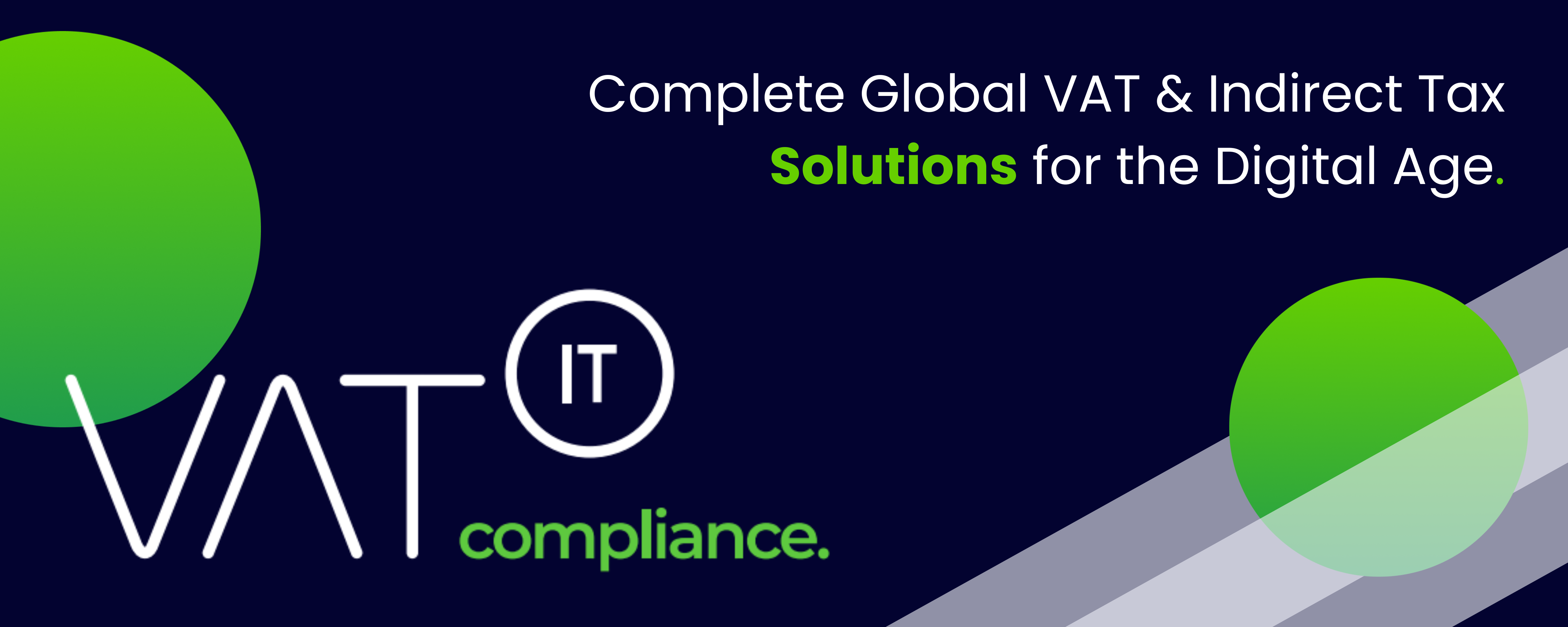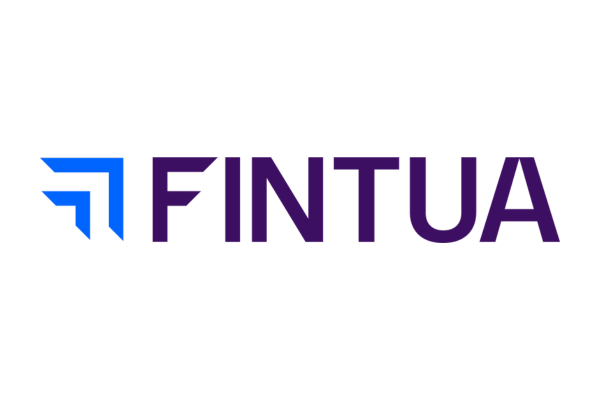Tags can be used to easily group different posts about the same topic. Most posts have one or more tag, which can be clicked on below the post itself.
It is also possible to search on tags via the search function (magnifying glass in the upper right section of the website). This will also allow you to add further criteria to search on, by which you can refine your search. You could for example search on the tag “rate”, but only within a specific jurisdiction and/or only within a certain date range.
In this post, we will discuss some of the most used VAT/GST tags we use on our website. Note that this is a work in progress, we have now detailed the most common tags, but will add more in due course.
Brexit
The UK left EU on 31 January 2020 from a policital point of view, but thanks to a transitional period UK was still treated as EU for VAT purposes. This transitional period has now ended, and from 1 January 2021 UK is a non-EU country for VAT purposes. For transactions involving goods, a temporary protocol is in place, according to which Northern Ireland (region of the UK, not to be confused with country Ireland) is still treated as an EU country. The Brexit triggers various changes in respect of the VAT treatment, as well as invoicing, reporting and VAT refund claims. All posts with this tag, can be found here.
Coronavirus
Covid-19 plays also an important role in VAT/GST life. To support taxpayers, some countries have (temporarily) reduced their VAT/GST rates. In rare cases, such in KSA, the rates were increased to safeguard revenues to fight the virus. There are also various incentives to facilitate/stimulate the import and trade of vaccines and medical devices. In addition, various countries offer more flexibility to their taxpayers and have expanded deadlines, allow other ways of communicating, and provide for faster refunds. All posts with this tag, can be found here.
Customs
Apart from VAT/GST, an import also triggers customs duties. In addition, there are special (customs) arrangements that may apply (such as inward processing relief), which can also have an impact on the VAT/GST treatment. All posts with this tag, can be found here.
Deduction
With “deduction” (often also called “ITC – input tax credit”) we refer to the question to what extent a business is entitled to settle input VAT against its output VAT. This is an important characteristic of a VAT/GST system, opposed to (cascade) sales tax systems. In most countries, we see that a restriction of this right could occur if the business is using its purchases for activities for which no VAT/GST is due (e.g. exempt transactions, or transactions outside the scope of VAT/GST). In addition, in some countries taxpayers are not allowed to claim input VAT/GST for purchases that they provide for free to their staff. All posts with this tag, can be found here. Note that we cover refunds of VAT/GST to non-registered traders and tourists under a separate tag “Refund”.
ECJ
The European Court of Justice is the highest judge in the European Union to review cases about VAT. In principle, all EU countries should respect the verdict of the ECJ. However, recently, in Poland, the Supreme Court has rejected the principle of the primacy of EU law over national legislation (see this post). All posts with this tag, can be found here.
E-invoicing
E-invoicing and real time reporting are often interchanged. Generally, with e-invoicing we refer to the way an invoice is issued to the customer. In principle, this requires that the customer accepts this (though in some countries and/or in some sectors this mandatory), and that the integrity and the authenticity can be verified (e.g. the data and the origin can be guaranteed). With real time reporting (for which we use a separate tag), we focus more on the role that such an e-invoice plays in providing the tax authorities with information about the transactions. All posts with the e-invoice tag, can be found here.
Electronic services/e-Commerce
Thanks (or due to) the new economy, it is easier for businesses to trade all over the world. Various countries have implemented (or are implementing) rules to ensure that there is a level playing field, to ensure that such transactions trigger the same VAT/GST impact as local taxpayers transactions. For digital services, we see more and more countries requiring foreign taxpayers to register (and charge destination country VAT/GST) for sales to local consumers. In the US, the Wayfair-case was a very important development, which was implemented in most states, and imposes sales and use tax obligations on remote sellers of digital services. For transactions involving goods, we also see a lot of changes. The EU implemented a major change on 1 July 2021, which amongst others abolishes the import VAT exemption for low value consignments. All posts with this tag, can be found here.
Exemption
Although exemptions and zero-rated transactions are often interchanged, the exemption is normally meant for specific transactions for which the taxable person that performs them is relieved from charging tax to its customers. Generally (exceptions exist), the taxable person can normally not claim the (input) VAT on its costs. All posts with this tag, can be found here.
Fraud / Tax evasion
Different types of fraud exist. The most important form of fraud is missing trader fraud, also called caroussel fraud, where the fraudster attempts to purchase without VAT, sell with VAT, and then dissappears after collecting but before remitting the VAT to the authorities. There are also different solutions to fraud. For example, the last few years various authorities require taxpayers to report their transactions in detail (SAF-T), and/or (almost) real time, allowing them to track fraud sooner. There are also countries that force taxpayers to apply a (domestic) reverse charge to risky transactions (e.g. consumer electronics, CO2 emission rights, real estate construction, etc.). In some countries, to stimulate retailers providing tax receipts to their customers, the authorities organize a lottery for which consumers can use their receipts as a ticket. All posts with this tag, can be found here.
Invoice
The invoice plays a central role for VAT/GST. It allows the authorities to verify which transaction occurred, and if VAT/GST was applied correctly. For a (business) customer, it is a very valuable document, especially if it mentions VAT/GST, as generally only with a valid invoice, VAT/GST can be reclaimed. By default, it is the vendor/supplier that issues the invoice to its customer. However, it may also be allowed that the customer (self-billing) issues the invoice or that the vendor/supplier outsources its billing operations to a third party. All posts with this tag, can be found here. Please note that we cover posts about electronic invoicing (e-invoicing) with a separate tag “E-invoicing”.
Implementation
We use this tag to cover all newsitems about jurisdictions that are implementing a new VAT/GST system. A few recent examples are Oman, Afghanistan, Qatar, Brazil, and Malaysia (the latter is switched from GST to SST, and may be returning to GST) and an older example is India. Often, when a country implements a VAT/GST system, it takes the learnings from “experienced” countries. Examples of more modern systems are Singapore or New Zealand, whereas the European Union is a useful example for taxing transactions within several regions within one union. All posts with this tag, can be found here.
Importation
Generally, the mere bringing of tangible property into the boundaries of a countries triggers the taxable event: import. The most common treatment is that import VAT/GST has to be paid at the border, which a business can normally claim as input VAT/GST. However, a lot of countries (to mitigate the cash flow impact) allow taxpayers a delay, or offer a VAT/GST deferment option. Via this option, taxpayers should no longer pay VAT/GST at the border, but instead report this as output VAT/GST in their VAT/GST return (in which they can normally also offset the same amount as input VAT/GST).
Importation usually triggers also other taxes, such as customs duties. All posts with this tag, can be found here.
Liability
In principle it is the taxpayer that performs the transaction that is liable to remit the VAT/GST to the tax authorities. However, there are exceptions. For example, under the reverse charge mechanism, it is the customer that takes care of reporting the VAT/GST that is due for its purchases to tax authorities (which can normally be deducted as input VAT at the same time). In that case, the vendor invoices without VAT/GST, and the customer self-assesses the VAT/GST that is due. This concept often applies for cross border trade, if VAT/GST is due in the recipient country, but the vendor does not have a VAT/GST registration in that country. However, we also see the reverse charge in domestic situation, where it is more focused on avoiding VAT/GST fraud (to avoid that the vendor does not remit its output VAT, the obligation is shifted to the customer, which is expected to be more reliable). There are also countries that have a withholding system for VAT/GST purposes, which means that the vendor will apply VAT/GST to its invoice, but the customer will not pay this amount (in some countries, partially), but instead will pay this tax (on “behalf” of the vendor) to the tax authorities. Another concept is import VAT/GST deferment, which does not so much relate to “who” pays the VAT/GST, but more “how” and “when” this is paid. For cases where import VAT deferment applies, instead of paying import VAT upon entry of the goods, the import VAT can be reported in the VAT/GST return (and in most cases, this VAT/GST can be immediately be claimed back as input VAT/GST, whereby a cash flow impact is avoided). For all posts about the topic “Liability”, please click here.
Place of supply
The place of supply rules drive which country is entitled to levy VAT/GST. In some jurisdictions, the rules say that VAT is due in another country, whereas other jurisdictions say that local VAT/GST is due, but against 0% (often referred to as an “export of “). For goods, often the physical location of the tangible item plays an important role, whereas for services in most jurisdictions the location of the vendor (B2C) or the location of the customer (B2B) is the driver. There are however a lot of country specific exceptions. All posts with this tag, can be found here.
Quick Fixes
On 1 January 2020 the EU Quick Fixes went live. These were four fixes that were introduced to smoothen the intra EU trade in goods, until a definitive system is into place. The fixes focus on the use of a VAT identification number, proof of transport to substantiate the zero rate/exemption, harmonised call-off stock rules and chain transactions (A sells to B, B sells to C, but the goods go from A to C). All posts with this tag, can be found here.
Rate
In most countries, there is at least one standard VAT/GST rate and a zero rate (or exemption). However, in addition to this, most countries also use (one or more) reduced rate(s), to stimulate/support certain types of products (for example, books and medical devices). In some jurisdictions (e.g. US) the rates change very frequently, but in most countries a VAT/GST rate change occurs only once in a few years. All posts with this tag, can be found here.
Real Estate
Transactions with immovable property are often subject to special VAT/GST rules. Some transactions are exempt from VAT/GST. Further, the VAT/GST deduction of VAT on real estate may be subject to a revision, which means that the usage of the real estate is monitored over a period of multiple years, to ensure that not just the year of purchase/construction is relevant. Also note that for real estate, there are various anti-fraud measures in place, such as the mandatory reverse charge mechanism (which disallows taxpayers to charge VAT to their customers, as it was found that this VAT was often not remitted). All posts with this tag, can be found here.
Refund
With this tag, we cover payments of VAT/GST that are not covered in the regular VAT/GST reporting. E.g. if a business can claim input VAT and settle this with its output VAT, we refer to this as “deduction” (separate tag). However, if a business claims VAT from another country (where it does not pay/report output VAT), or when a consumer, as a tourist, is entitled to a refund for its purchases in the country it travels through. All posts with this tag, can be found here.
Registration
Normally, if a person/entity meets the criteria of a “business” in its home country, it is required to apply for a VAT/GST registration with its local authorities. It will receive an identification number (see also separate tag) and will need to comply with its VAT/GST obligations (keeping books, submitting returns, issue compliant invoices, etc.). In certain cases (e.g. business that merely provide exempt transactions, or small sized business (see separate tag) that stay below a threshold) can obtain a relief from being registered. In addition, it is also possible that a business has the obligation to register in countries outside its home country, due to its activities in that country (e.g. a French business that imports and sells goods to consumer in South Africa). All posts with this tag, can be found here.
Reporting
In most countries, businesses are required to submit at least a VAT/GST return for a period (usually per month, though this depends on the country and size of the business). In some countries, this traditional VAT/GST return is however being replaced by the data that taxpayers already have to submit in other ways (e.g. real time reporting, or SAF-T files). In addition, various countries ask businesses to provide extra reports (for certain types of transactions). For example, in the EU, we see that businesses report their cross border goods transactions with an Intrastat return and they include their sales of goods/service to other EU countries in a VIES-listing. All posts with this tag, can be found here.
SAF-T
SAF-T is short for Standard Audit File for Tax, an international standard for electronic exchange of data. Some countries currently require business to submit such a file to the tax authorities upon request, while others need this to be submitted periodically together with the VAT/GST-return (in some countries, it has even replaced the regular return). De SAF-T file enables the tax authorities to perform data analysis on the taxpayer’s information. All posts with this tag, can be found here.
Tax authorities / Penalties
With this tag, we focus on all communication to and by the tax authorities. For example, this includes guidance provided by the tax authorities. It also covers posts that detail how to obtain a ruling. Or how the tax authorities perform audits, and how they impose assessments, penalties and interest claims. In addition, in some countries the tax authorities agree with tax payers on how they should organize their tax control framework, which is also covered under this tag. Further, sometimes there are different authorities within one country that are in dispute about who should collect and/or is entitled to the VAT/GST revenues. All posts with this tag, can be found here.
Technology
Technology is becoming more and more important for VAT/GST. Most business use an ERP system to process their transactions, and technology can help them to meet their VAT/GST obligations. In addition, the tax authorities are imposing new requirements to taxpayers, such as real time reporting, for which technology is needed. With this tag, we also cover posts about specific parts of technology that can help a taxpayer, such as OCR techniques for identifying text on invoices, artificial intelligence, etc. All posts with this tag, can be found here.
Vouchers
In the world of VAT/GST, we usually see vouchers in two ways. The first is a voucher that is given as a reward to stimulate buyers to purchase in such a way (i.e. asking for a receipt) that the authorities can track the transaction (and avoid fraud/evasion). The second situation is where someone purchases a voucher and it has to be determined if this is a payment in advance (usually the case for single purpose vouchers, i.e. when the VAT/GST treatment can at that point already be established) or if for VAT/GST a transaction only occurs when the voucher is redeemed (usually the case for multi purpose vouchers). You can find our posts with this tag via this link.















